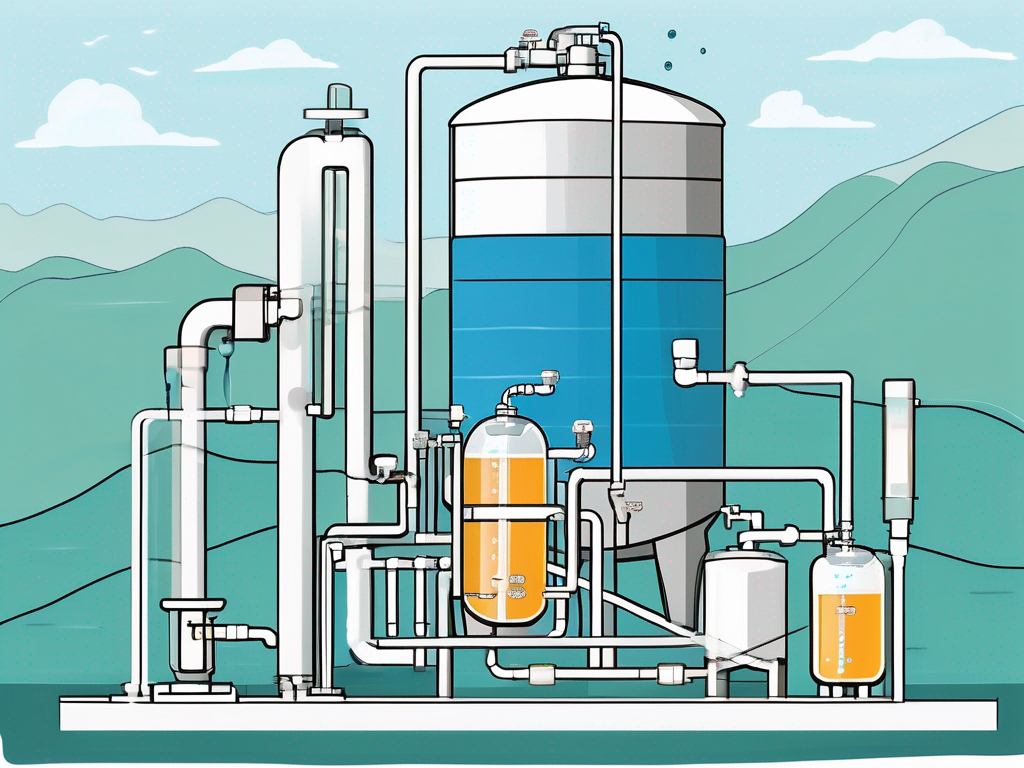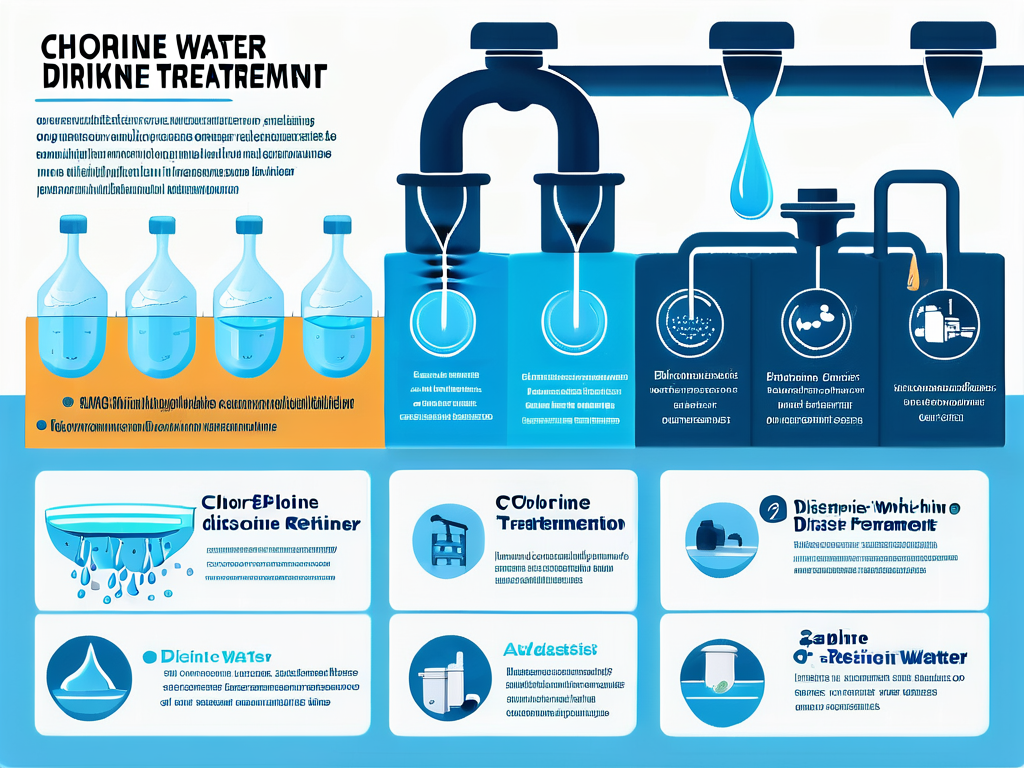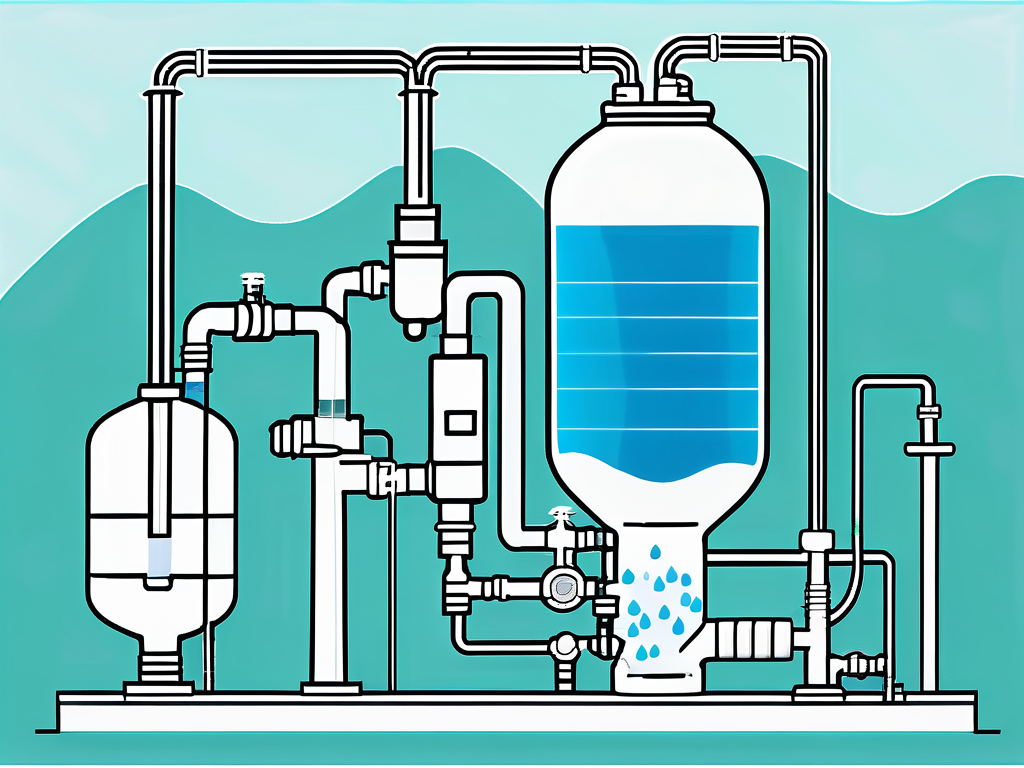
Chlorine Water Treatment System: Essential Guide for Safe and Clean Water
Chlorine Water Treatment System: Essential Guide for Safe and Clean Water
In today’s health-conscious world, the quality of drinking water is paramount. A chlorine water treatment system is essential for ensuring that your water is not only safe but also clean. This guide delves into the fundamentals of chlorine water treatment, its components, benefits, potential drawbacks, and alternative solutions, helping you make informed decisions about your water purification needs.
Understanding Chlorine Water Treatment
Chlorine water treatment is a widely used method to disinfect and purify water. By understanding its principles and applications, you can appreciate why it remains a preferred choice in many settings, including municipal water systems, swimming pools, and industrial applications.
The Basics of Chlorine Water Treatment
Chlorine, a potent disinfectant, has been used in water treatment since the early 1900s. Its effectiveness in destroying harmful microorganisms, including bacteria and viruses, makes it an invaluable asset. Chlorine can be added to water in different forms, such as gas, liquid, or solid tablets, each suited for specific applications and treatment levels. The choice of chlorine form often depends on the scale of treatment and the specific characteristics of the water being treated. For instance, gas chlorine is typically used in larger municipal systems due to its cost-effectiveness, while liquid bleach is often favored in smaller facilities or home water systems.
Importance of Chlorine in Water Treatment
The importance of chlorine cannot be overstated. It acts as a barrier against waterborne diseases like cholera, dysentery, and typhoid fever. By ensuring a minimum residual chlorine concentration in treated water, it provides ongoing protection against microbial regrowth as the water travels through pipelines to reach end-users. Additionally, chlorine treatment plays a crucial role in maintaining public health standards, as it helps to ensure that water quality meets regulatory requirements set by health authorities. This is particularly vital in regions where access to clean water is limited, and the risk of contamination is high.
How Does Chlorine Water Treatment Work?
Chlorine works through a process known as oxidation, in which chlorine molecules react with the membranes of microorganisms, disarming their ability to function or reproduce. Moreover, during the chlorination process, chlorine forms chloramines when it reacts with organic matter, offering additional disinfection benefits. Chloramines, while less potent than free chlorine, provide a longer-lasting disinfectant effect, which is particularly useful in maintaining water quality over extended distribution systems.
The system's effectiveness depends on several factors including chlorine dosage, contact time, and water temperature. Managing these elements ensures that water is treated adequately before it reaches consumers. Furthermore, the presence of other substances in the water, such as ammonia or organic compounds, can influence the chlorination process, necessitating careful monitoring and adjustment of treatment protocols. This complexity highlights the need for skilled water treatment professionals who can adapt strategies to meet varying water quality challenges.
In addition to its disinfection capabilities, chlorine also plays a role in the removal of certain contaminants, such as iron and manganese, which can affect water taste and appearance. The oxidation process helps to precipitate these metals, making them easier to filter out. This dual function of chlorine—disinfecting while also improving aesthetic qualities—underscores its versatility as a water treatment agent. As water treatment technologies continue to evolve, ongoing research into chlorine alternatives and enhancements aims to optimize safety and efficacy, ensuring that communities have access to safe and clean water.
Components of a Chlorine Water Treatment System
A chlorine water treatment system consists of various components that work cohesively to ensure optimal disinfection levels. Familiarizing yourself with these components can help you understand the functionality of the system and make informed maintenance decisions.
Chlorine Source and Injection System
The starting point of any chlorine water treatment system is the chlorine source, which may include gas, liquid, or solid chlorine. This component ensures a steady supply of chlorine is available for treatment. The injection system then delivers the chlorine into the water supply, regulating flow rates to maintain desired concentration levels. The selection of the chlorine source is often influenced by factors such as the scale of the treatment facility, cost considerations, and safety protocols. For instance, gaseous chlorine, while highly effective, requires stringent safety measures due to its toxic nature, whereas liquid chlorine is easier to handle and store, making it a popular choice for many municipal systems.
Chlorine Contact Chamber
After injection, water flows into the chlorine contact chamber, a vital space where water and chlorine mix. This chamber allows sufficient time for the chlorine to react with contaminants, ensuring effective disinfection. The design and volume of the chamber are crucial, as they directly affect disinfection efficiency. Factors such as flow rate, water temperature, and the presence of organic matter can influence the effectiveness of the chlorine in this chamber. Additionally, some systems incorporate baffles or other structural elements to enhance mixing and contact time, thereby improving the overall disinfection process. Understanding these dynamics can help operators optimize their systems for varying water quality conditions.
Chlorine Residual Testing Equipment
To ensure the chlorine treatment system functions correctly, chlorine residual testing equipment is necessary. Regular tests determine the concentration of chlorine in the water, allowing operators to adjust the chlorine levels as needed. This ongoing testing guarantees that the treated water remains safe for consumption. The testing equipment can range from simple colorimetric tests to advanced online monitoring systems that provide real-time data. Furthermore, maintaining accurate records of chlorine residuals is essential not only for regulatory compliance but also for identifying trends over time, which can indicate changes in water quality or system performance. By employing a robust testing regimen, water treatment facilities can ensure that they consistently meet health and safety standards while also being prepared for any potential emergencies that may arise.
Benefits of Using Chlorine Water Treatment
The utilization of chlorine in water treatment brings numerous benefits, making it a preferred choice for many communities and businesses worldwide.

Effectiveness Against Pathogens
Chlorine’s renowned effectiveness against a broad spectrum of pathogens, including bacteria, viruses, and protozoa, makes it a cornerstone in water safety. This is especially critical in urban settings where water sources can be contaminated with pathogens from runoff or aging infrastructure. In fact, studies have shown that chlorine can reduce the presence of harmful microorganisms by up to 99.9% when applied correctly, providing a significant safety net for public health. Moreover, chlorine's residual effect means that it continues to protect water supplies as they travel through distribution systems, ensuring that water remains safe for consumption at the point of use.
Cost-Effectiveness of Chlorine Treatment
Chlorine water treatment is economically viable. The initial investment in equipment and infrastructure is relatively low compared to some alternative treatment methods. Additionally, the long-term costs of chlorine are manageable due to its widespread availability and low operational expenses. Many municipalities find that the cost of chlorine treatment is offset by the reduction in health care costs associated with waterborne illnesses. Furthermore, the ability to scale chlorine treatment systems easily allows communities of varying sizes to implement effective water treatment solutions without incurring prohibitive expenses.
Ease of Use and Maintenance
Chlorine systems are generally straightforward to operate and maintain. Automatic chlorination systems can regulate the chlorine dosage to ensure optimal chlorine levels with minimal human intervention. Furthermore, regular system audits and tests can help identify issues early, enhancing the system's reliability. Training programs for operators are often simple and can be completed in a short time frame, enabling quick adaptation to new technologies. Additionally, the infrastructure required for chlorine treatment is often less complex than that needed for alternative methods, such as ozone or UV treatment, which can require more specialized knowledge and equipment. This simplicity not only reduces the burden on local water treatment facilities but also fosters a more resilient water supply system that can adapt to changing demands and conditions.
Potential Drawbacks of Chlorine Water Treatment
While chlorine treatment presents numerous advantages, it also has potential drawbacks that require consideration for effective water treatment planning.
Health Concerns Related to Chlorine
Concerns related to the ingestion of chlorinated water and the formation of byproducts, particularly trihalomethanes (THMs), have emerged over the years. Long-term exposure to high levels of THMs can pose health risks, leading to increased scrutiny and the need for continuous monitoring. Research has suggested a potential link between THMs and various health issues, including bladder cancer and reproductive problems. As a result, regulatory agencies are continually evaluating and updating guidelines to ensure that chlorine levels remain within safe limits, while also encouraging the exploration of alternative disinfection methods that may mitigate these risks.
Environmental Impact of Chlorine Use
The environmental impact of chlorine use, particularly regarding aquatic ecosystems, is another area of concern. Chlorine can harm aquatic life if it escapes treatment systems and enters natural water bodies, highlighting the importance of properly managing and containing chlorine discharge. Furthermore, the breakdown of chlorine in the environment can lead to the formation of other toxic compounds, which may further disrupt local ecosystems. This raises the question of sustainability in water treatment practices, as communities strive to balance effective disinfection with the preservation of their natural resources and biodiversity.
Taste and Odor Issues
One of the more common complaints about chlorinated water involves its taste and odor. While chlorine effectively disinfects water, some consumers find the chemical smell and flavor unappealing. This aspect may necessitate additional treatment steps, such as activated carbon filtration, to improve palatability. Moreover, the presence of chlorine can also affect the overall enjoyment of water in culinary applications, as it may alter the flavor profile of beverages and food prepared with treated water. As a result, many households invest in home filtration systems or opt for bottled water, leading to increased consumer demand for alternatives that provide both safety and sensory satisfaction.
Alternatives to Chlorine Water Treatment
For those seeking alternatives to chlorine water treatment, several viable options exist, each with its own benefits and considerations.

UV Water Treatment Systems
Ultraviolet (UV) water treatment systems utilize UV light to disinfect water, effectively thwarting microorganisms without introducing chemicals. This method has gained popularity, particularly in residential and point-of-use applications, as it leaves no residual chemicals. Moreover, UV systems are relatively low-maintenance, requiring only periodic lamp replacement and cleaning of the quartz sleeve to ensure optimal performance. They are also effective against a wide range of pathogens, including bacteria, viruses, and protozoa, making them a reliable choice for households concerned about waterborne diseases.
Ozone Water Treatment Systems
Ozone treatment involves injecting ozone gas into water, offering powerful oxidation properties that effectively eliminate pathogens. Though more expensive than chlorine systems, ozone systems have the advantage of improving the water quality without taste or odor issues. Additionally, ozone breaks down into oxygen after its disinfection process, leaving no harmful byproducts. This makes it an environmentally friendly option. However, it is essential to consider that ozone systems require careful monitoring and maintenance to ensure that ozone levels remain safe for human exposure, as high concentrations can be harmful.
Reverse Osmosis Systems
Reverse osmosis (RO) systems use a semi-permeable membrane to filter out contaminants from water. While not a method solely focused on disinfection, RO systems can effectively remove pathogens and other impurities, making them an excellent supplementary treatment option in areas with low water quality. These systems are particularly beneficial for removing dissolved solids, heavy metals, and certain chemicals, resulting in cleaner and safer drinking water. However, users should be aware that RO systems can waste a significant amount of water during the filtration process, and regular maintenance is necessary to prevent membrane fouling and ensure long-term efficiency.
Maintaining Your Chlorine Water Treatment System
Proper maintenance of your chlorine water treatment system is vital for ensuring effective operation and longevity. Regular checks and calibrations help identify potential issues before they escalate. By adhering to a structured maintenance schedule, operators can not only prolong the lifespan of the system but also enhance the quality of the water being treated, ensuring it meets safety standards for consumption and use.
Regular System Checks
Regular system checks involve monitoring components, including pumps, contact chambers, and injection systems. Keeping detailed records of maintenance activities ensures a comprehensive understanding of system performance over time. Additionally, it is beneficial to conduct visual inspections to identify any signs of wear and tear, such as leaks or corrosion, which could compromise the system's integrity. Utilizing advanced monitoring technology, such as automated sensors and alerts, can further streamline this process, allowing for real-time data collection and analysis.
Understanding Chlorine Levels
A thorough understanding of chlorine levels is essential for effective disinfection. Operators should be trained in testing and interpreting chlorine residual results, which inform necessary adjustments to the chlorine dosage and treatment protocols. It is also important to recognize the factors that can influence chlorine levels, such as temperature, pH, and the presence of organic matter. Regular training sessions and workshops can equip staff with the knowledge to adapt to these variables, ensuring optimal disinfection performance throughout varying conditions.
Troubleshooting Common Issues
Every system may encounter occasional issues that need to be addressed promptly. Troubleshooting can include checking for clogging in the injection line, ensuring the contact chamber is functioning correctly, and investigating any irregularities in residual chlorine levels. Operators should develop a systematic approach to troubleshooting, which may involve creating a checklist of common problems and their solutions. Additionally, maintaining an inventory of spare parts can minimize downtime, allowing for quick repairs and continued operation. Engaging with experienced technicians for periodic system audits can also provide insights into potential improvements and preventative measures, enhancing the overall reliability of the system.
Choosing the Right Chlorine Water Treatment System
In an evolving market, selecting the ideal chlorine water treatment system involves careful consideration of various factors to meet your specific water quality needs.
Assessing Your Water Quality Needs
Start by assessing the particular contaminants present in your water supply. Testing can provide a clearer picture of the microorganisms, chemicals, and sediment that need to be addressed. Understanding these parameters is crucial for determining the necessary chlorine system specifications. Additionally, consider the source of your water, whether it is municipal, well, or surface water, as this can significantly influence the types of contaminants you may encounter. Regular monitoring and testing can help you stay ahead of any changes in water quality, ensuring that your treatment system remains effective over time.
Comparing Different System Models
With numerous systems available, it’s essential to compare models based on their features, efficiency, and user reviews. Key aspects to evaluate include flow rates, required maintenance, and operational costs, guiding you towards the right choice tailored to your needs. Furthermore, look into the technology used in each system, such as whether it employs gas chlorine, liquid chlorine, or chlorine tablets, as each method has its own benefits and drawbacks. Reading case studies or testimonials from other users can provide valuable insights into the real-world performance of different systems, helping you make a more informed decision.
Installation and Operational Costs Considerations
Beyond the initial purchase price, it’s vital to consider overall installation costs, labor fees, and ongoing operational expenses. A comprehensive understanding of these factors will help you budget effectively and avoid unexpected expenses down the line. It’s also worth exploring potential rebates or incentives offered by local governments or environmental agencies for installing water treatment systems, which can help offset some of these costs. Additionally, consider the long-term savings associated with improved water quality, such as reduced plumbing repairs and enhanced appliance longevity, which can further justify your investment.
Moreover, the choice of a chlorine water treatment system can also impact the environment. While chlorine is effective in eliminating harmful pathogens, it can produce disinfection byproducts that may pose health risks if not managed properly. Therefore, it’s important to explore systems that incorporate advanced filtration or additional treatment stages to mitigate these concerns. By weighing both the benefits and potential drawbacks, you can ensure that your choice aligns with both your health needs and environmental considerations.
